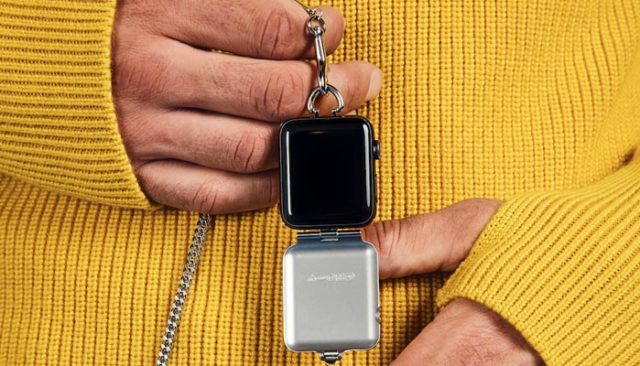
Is this the logical next step after smartwatches and other monitoring devices we willing use in everyday life? City love data, and it was just a matter of when before the club turned their technological acumen to learn more about the habits of their supporters: Just imagine your gameday heatmap, with those deep red blobs at your seat, waiting in line for the bathroom, waiting in line for the very decent burnt end Dirty Fries at Mighty Quinn’s.
#Smart pocket watch plus#
According to a statement issued by City, this “innovative upgrade” to the club scarf will allow them to “measure those ups and downs and get a better understanding of the emotion at the heart of the world’s beautiful game.” The Connected Scarf measured 120 moments in a 90-minute game (presumably plus stoppage time), which means the sensors checked in every 45 seconds on average. Notably, there was also an EDA sensor with “lie detector technology” - which sounds like it could be more useful on the field: Strap one on a world-class embellisher Luquinhas of the New Jersey Red Bulls and watch his production slow to a trickle.Ĭalled the Connected Scarf, it was created by Cisco Systems - City helped facilitate content creation through access to fans who opted into the activity. One sensor monitored body temperature, another blood flow, and accelerometer data monitored movement. They recently ran a pilot program in which a handful of lifelong fans wore club scarves with “EmotiBit” sensor systems from Cisco Systems stitched into them. It’s high time.Manchester City seem to think so. Nascent information could easily be made available on our wrists. All the while we’ve ignored the most convenient place to keep track of all that information.
#Smart pocket watch windows#
Android, iOS and Windows devices are now capable of replacing all of them. We’ve seen watches, Walkmen, radios, cell phones, address books, calendars, checkbooks, and even wallets combine into multi-function devices.

Multi-device interaction only makes more and more sense considering the trend in smart phone sizes, making it harder to pull so-called phablets out of a pocket. Google is taking a more “Top Gun” approach to the problem (and at a much higher price point) with Google Glass, a conspicuous single-lensed pair of digital glasses. Nightclubs and festivals keep track of authorized patrons and those old enough to drink. Tailors store pins on a cushion attached to their wrist. Other athletes use sweat bands, avoiding a strange mid-match sweat wipe with a hankie from their pocket. (Referees, meanwhile, use wrist devices to keep track of downs). American football quarterbacks attach lists of plays to theirs. Indeed, the human wrist is one of the most useful locations to keep our tools hands-free and accessible. However, with the company’s newest pedometer offering, called the FitBit Flex, the company saw the benefits in their competitors’ designs it’s a product worn on a wrist. FitBit users initially scoffed at the premise of wearing the tracking devices on their wrists. Nike’s has an information display, Jawbone’s does not.īefore these products, the only company making such a device was FitBit, a pack-of-gum-sized electronic block that owners of the device would keep in their pocket or attach to clothing.

Last year, Jawbone and Nike each released high-tech pedometers and wellness devices that are worn on the wrist and sync data with smart phones.

Our empty wrists are not going unnoticed by consumer electronics makers either. Don’t like the song that’s playing? Press the button on the side of your Pebble to skip it. Feel your phone buzz in your pocket? Look at your wrist to see the Pebble showing the text you just received.
#Smart pocket watch android#
It doesn’t replace your Android or iPhone, it enhances it by letting you keep it out of your hand.

It just began shipping its eponymous product–a wrist-worn cell-phone-driven information device–last week. Taking advantage of the ever more vacant wrist is Pebble, a company crowd-funded on Kickstarter.


 0 kommentar(er)
0 kommentar(er)
